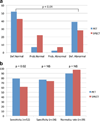CFR and FFR assessment with PET and CTA: strengths and limitations
- PMID: 24652346
- PMCID: PMC4578154
- DOI: 10.1007/s11886-014-0484-5
CFR and FFR assessment with PET and CTA: strengths and limitations
Abstract
Positron emission tomography (PET) myocardial perfusion imaging (MPI) has high diagnostic accuracy and prognostic value. PET-MPI can also be used to quantitatively evaluate regional myocardial blood flow (MBF). This technique also allows the calculation of the coronary flow reserve (CFR)/myocardial flow reserve (MFR), which is the ratio of MBF at peak hyperemia to resting MBF. Coronary computed tomography angiography (CTA) is a non-invasive method for accurate detection and exclusion of high-grade coronary stenoses, when compared to an invasive coronary angiography reference standard. However, CTA assessment of coronary stenoses tends toward overestimation, and CTA cannot determine physiologic significance of lesions. Recent advances in computational fluid dynamics and image-based modeling permit calculation of non-invasive fractional flow reserve derived from CT (FFRCT), without the need for additional imaging, modification of acquisition protocols, or administration of medications. In this review, we cover the CFR/MFR assessment by PET and FFR assessment by CT.
Conflict of interest statement
Ran Heo declares that he has no conflict of interest.
Jonathon Leipsic has received grant support from and been a consultant for HeartFlow. He has received payment for development of educational presentations including service on speakers’ bureaus from GE Healthcare.
James K. Min has received grant support from HeartFlow. He serves as a consultant to HeartFlow.
Figures





References
-
- Stabin MG. Proposed revision to the radiation dosimetry of 82Rb. Health Phys. 2010;99(6):811–813. - PubMed
-
- Di Carli MF, Dorbala S, Meserve J, El Fakhri G, Sitek A, Moore SC. Clinical myocardial perfusion PET/CT. J Nucl Med Off Publ Soc Nucl Med. 2007;48(5):783–793. - PubMed
-
- Stabin MG. Radiopharmaceuticals for nuclear cardiology: radiation dosimetry, uncertainties, and risk. J Nucl Med Off Publ Soc Nucl Med. 2008;49(9):1555–1563. - PubMed
Publication types
MeSH terms
Substances
Grants and funding
LinkOut - more resources
Full Text Sources
Other Literature Sources

